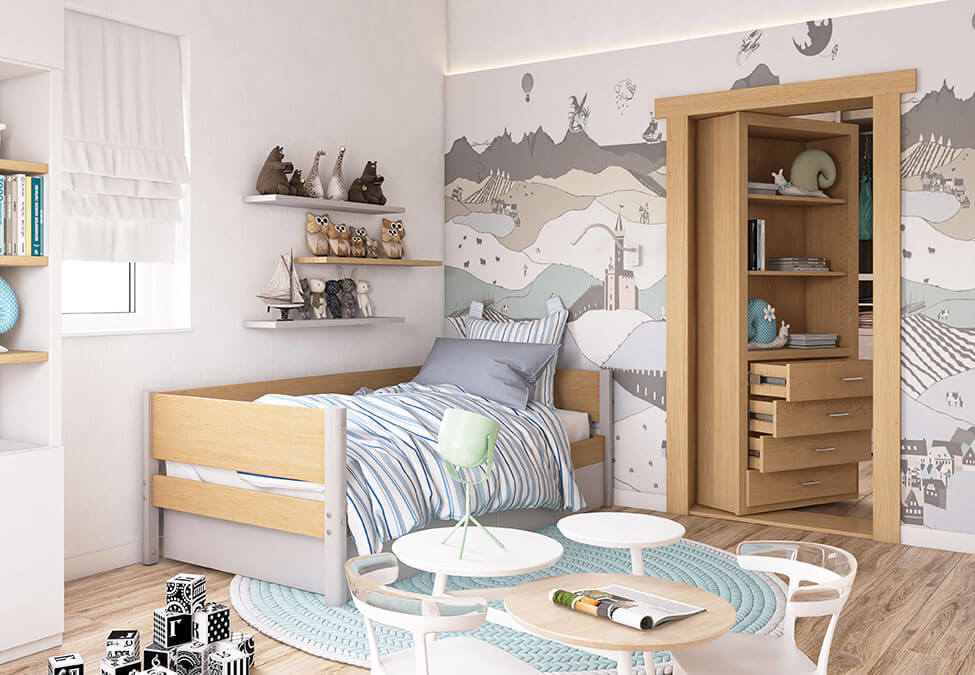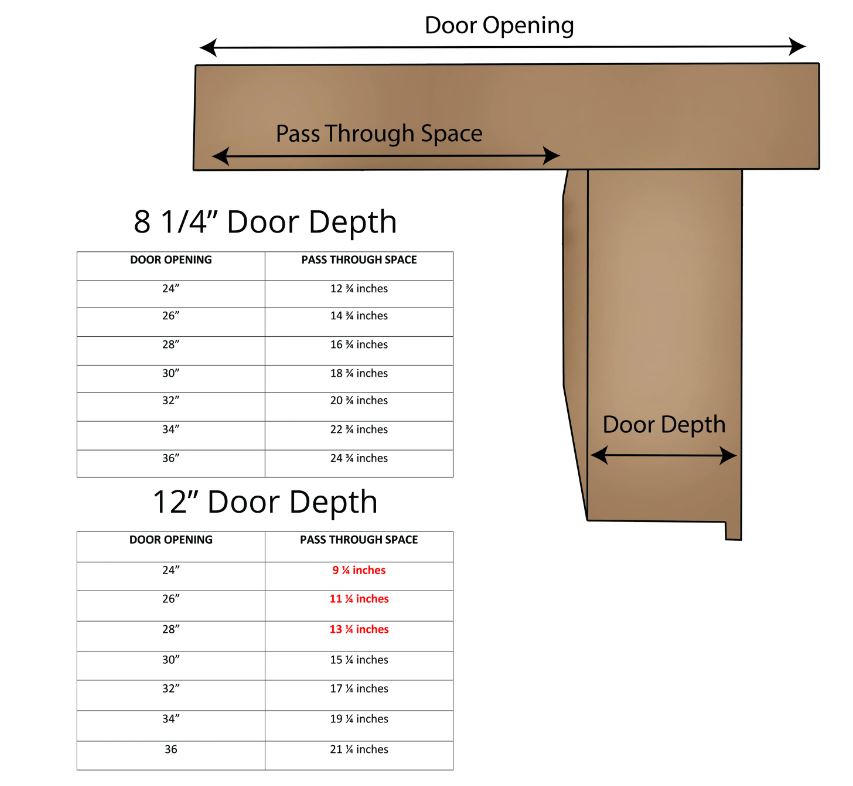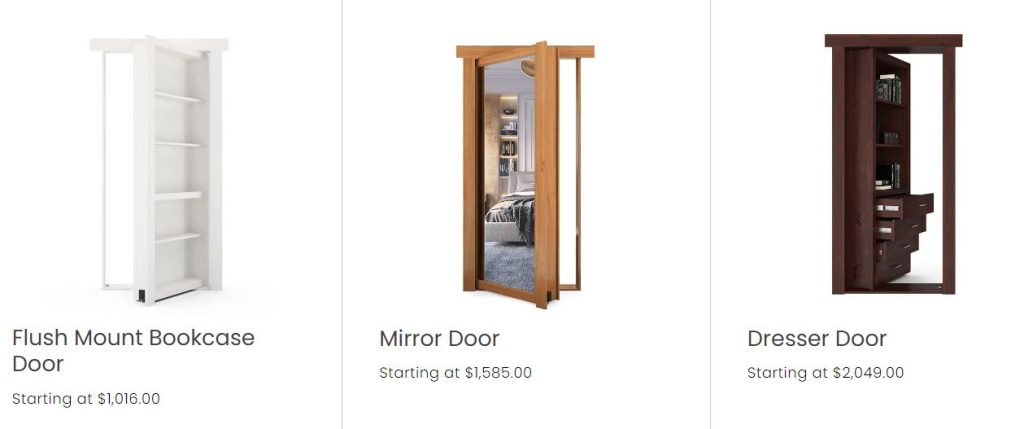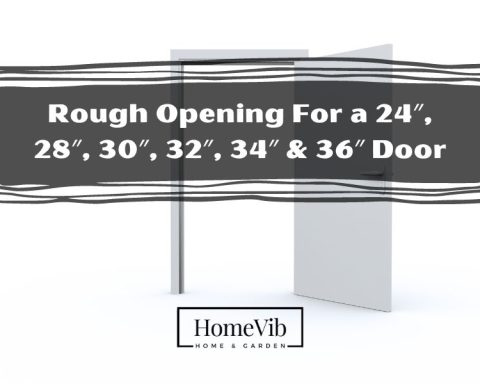To install a Murphy Door, evaluate your space and gather the necessary tools and materials. Measure and mark the dimensions of the door opening, then carefully cut and frame the entrance.
Whether you’re a DIY enthusiast or simply looking for a creative way to optimize space, learning how to install a Murphy Door can be exciting.
This article will provide a comprehensive guide on installing a Murphy Door, from understanding the concept to the finishing touches.
What Is a Murphy Door?

Murphy Doors, also known as hidden doors or sliding bookcases, are cleverly designed doors that blend seamlessly into your wall, camouflaging their true purpose.
Imagine a door that provides access and holds a secret within. They often appear as a bookcase, cabinet, or panel.
Still, they reveal hidden spaces or passages with a push or pull. These doors are not only functional but also add an element of surprise and elegance to any room.
What Is a Murphy Door Used For?
Murphy Doors serve many purposes, making them a versatile addition to any home. Here are some common uses for a Murphy Door:
- Secret Rooms or Hideaways: A Murphy Door can conceal secret rooms or hideaways within your home. It could lead to a private study, a cozy reading nook, a home theater, or even a hidden storage area for valuable items.

- Maximizing Space: A Murphy Door can be a game-changer in smaller homes or rooms with limited space. You can efficiently utilize every inch of your space by incorporating a hidden door. For example, a Murphy Door in a small bedroom could reveal a secret walk-in closet, providing additional storage without sacrificing valuable floor space.
- Enhancing Security: Murphy Doors can contribute to your home’s security by providing extra protection. When closed and camouflaged, they create an illusion that makes it harder for potential intruders to identify points of entry.
- Aesthetic Appeal: Murphy Doors serve a functional purpose and add a touch of elegance and sophistication to your interior design. They can seamlessly blend in with your existing decor and act as a focal point or conversation starter.
Can You Lock a Murphy Door?
Yes, you can lock a Murphy Door to ensure privacy and security. While the primary purpose of a Murphy Door is often to remain inconspicuous, there may be situations where you want to restrict access to the hidden space behind it.
Remember, the type of lock you choose will depend on the specific design of your Murphy Door and the level of security you desire.
It’s essential to consult with professionals or do thorough research to determine the most suitable locking mechanism for your needs.
How Do You Install a Murphy Door?
To install a Murphy Door, follow these step-by-step instructions:
- Evaluate Your Space: Before you begin the installation process, evaluate the area where you plan to install the Murphy Door. Consider the wall structure, available space, and clearance requirements. Ensuring that the chosen location accommodates the door’s dimensions is crucial.
- Gather the Necessary Tools and Materials: Collect all the tools and materials you will need for the installation. This may include a measuring tape, level, drill, screws, hinges, a saw, and paint or finish for the door. Having everything prepared in advance will make the process smoother.
- Measure and Mark: Measure the dimensions of the door opening and mark the desired height and width on the wall. Ensure that your markings are accurate by using a level. Precise measurements are crucial for a proper fit.
- Cut and Frame the Opening: With the measurements in place, carefully cut out the door opening using a saw. Create a sturdy frame around the doorway, ensuring it is flush with the surrounding wall. The frame supports the door and helps it blend seamlessly into the wall.
- Install Hinges: Attach the hinges to the door and the frame. Make sure the hinges are correctly aligned and securely fastened. The hinges allow the Murphy Door to swing open and closed smoothly. Double-check that they are installed at the correct height and distance from the edges.
- Mount the Murphy Door: Lift it carefully and position it within the door frame. Attach the hinges to the edge, ensuring they are aligned with the corresponding hinges on the door. Test the door to ensure it opens and closes smoothly without any obstructions.
- Finishing Touches: Once the door is securely in place, make any necessary adjustments to ensure it functions properly. Use a level to check the door is straight and adjust the hinges if needed. Additionally, ensure that the door is properly aligned with the surrounding wall.
- Paint or Finish the Door: Apply the desired color or finish to the door, following the manufacturer’s instructions. This step is crucial for blending the Murphy Door seamlessly into the wall and matching the surrounding decor. Take your time to achieve a professional and cohesive look.
How Much Does It Cost To Install a Murphy Door?
The cost of installing a Murphy Door can vary depending on several factors. The type and size of the Murphy Door you choose will significantly impact the price.
More oversized doors or doors with additional features, such as built-in shelving or hidden compartments, tend to be more expensive than standard-sized doors.
The materials used for constructing the door and the desired finish can affect the cost. Common materials include wood, laminate, or veneer.
Higher-end materials or custom finishes may come at a higher price point. The complexity of the installation process can also impact the cost.
Suppose the wall requires extensive modifications or structural changes to accommodate the Murphy Door. In that case, it may increase the overall installation cost.
Hiring a professional or tackling the installation yourself will affect the cost. Professional installation services typically come with a fee, but they provide expertise and ensure proper installation.
DIY installations may save on labor costs but require a higher skill level and time commitment.
Consider any additional features or accessories you may want to include with your Murphy Door. This could include locking mechanisms, specialized hardware, or customized shelving options. These extras may add to the overall cost.
Given these variables, providing an exact cost for installing a Murphy Door is challenging.
However, as a rough estimate, the cost can range from a few hundred dollars for a basic DIY kit to several thousand dollars for larger, custom-designed doors with professional installation.
How Deep Can a Murphy Door Be?

The depth of a Murphy Door can vary depending on the specific design and customization options. Typically, the depth of a standard Murphy Door is around 8 and 1/4 inches deep.
However, it’s important to note that wall thickness, structural considerations, and the desired functionality of the hidden space behind the door may influence the available depth.
Suppose you have specific requirements for the depth of your Murphy Door. Consulting with the manufacturer, contractor, or professional carpenter is advisable.
They can provide guidance based on your needs and help you select a Murphy Door design that aligns with the available space and desired functionality.
How Much Clearance Does a Murphy Door Need?
The exact amount of clearance needed will vary depending on the specific model of the Murphy door.
The clearance needed for a Murphy Door primarily depends on the specific design and size of the door, as well as any additional features or shelving incorporated into it.
Here are some general guidelines regarding clearance for a Murphy Door:
Swing Clearance
The door should have enough space to open and close without obstructions. As a rule of thumb, a clearance of at least 2 to 3 feet in front of the door is recommended for smooth movement.
This ensures that furniture, decor, or other items in the room won’t hinder the door’s operation.
Side Clearance
Besides swing clearance, it’s essential to consider the side clearance of the Murphy Door. This refers to the space required on either side of the door when it is open.
The amount of side clearance needed will depend on the door’s width and the angle at which it swings open.
As a general guideline, allowing for 1 to 2 feet of side clearance on each side is advisable to ensure easy passage.
Ceiling Clearance
Consider the ceiling height when installing a Murphy Door, especially if the door is taller than the average doorway.
Ensure sufficient clearance between the top of the door and the ceiling to prevent contact or interference when the door is in motion.
This clearance should be at least a few inches to accommodate the door’s movement.
Remember, the clearance requirements may vary depending on the specific design and dimensions of your Murphy Door.
It’s essential to refer to the manufacturer’s guidelines and recommendations for your particular door model.
Additionally, consulting with professionals, such as contractors or carpenters, can provide valuable insights and help ensure that you have adequate clearance for your Murphy Door installation.
How Much Weight Can a Murphy Door Hold?
The weight capacity of a Murphy Door can vary depending on factors such as the design, materials used, and construction quality.
However, on average, a well-built and properly installed Murphy Door can typically support a weight range of 100 to 300 pounds.
It’s important to note that the weight capacity may also be influenced by the type of hinges and hardware used.
Heavy-duty hinges are often recommended for Murphy Doors that will bear significant weight or have shelves for storing items. These hinges are designed to provide additional strength and support.
How Much Does a Murphy Door Cost?

The total cost of a Murphy door can range from $500 to $5,000, depending on its size, materials, design complexity, additional features, and installation method.
While it is challenging to provide an exact cost without specific details, here are some general guidelines to consider:
- Standard vs. Custom Designs: Standard-sized Murphy Doors typically come at a lower cost than custom-designed doors. Customization options, such as specific dimensions or unique finishes, may increase prices.
- Materials: The type of materials used for the Murphy Door can significantly impact the cost. Common materials include wood, laminate, veneer, or composite materials. Higher-end or specialized materials may come at a higher price point.
- Additional Features: Murphy Doors can have different features, such as built-in shelving, hidden compartments, or locking mechanisms. These extras can increase the overall cost of the door.
- Installation: The installation cost can vary depending on whether you choose professional installation services or a DIY approach. Professional installation typically incurs an additional fee but ensures proper installation and may come with warranty coverage.
As a rough estimate, essential, standard-sized Murphy Doors without installation can range from a few hundred to a few thousand dollars.
Custom-designed or larger-sized doors with additional features and professional installation can range from several thousand dollars to even higher prices.
It’s best to consider your budget, design preferences, and the overall value a Murphy Door can bring to your space.









